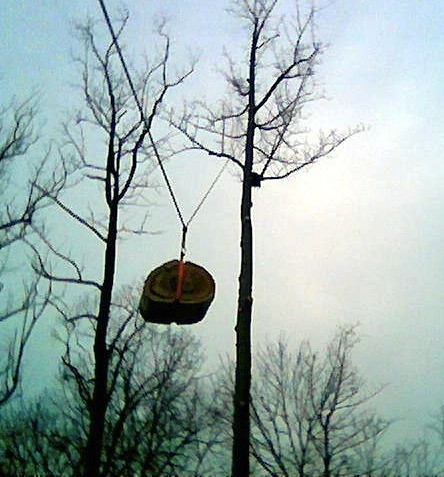sotc
Dormant hero!!
Probably pushing on the trunk the whole time

Fairly big tree...not so sure setting a line would have held it to the lay unless it was extra strong and pulled aggressively by something big. Might have kept it off the house though, if it had just held.
 , maybe leave it a little thicker on the left (maybe not), gutted the center of the hinge, and then just wedged it over. Two or three hardheads would have managed it nicely, I'm guessing.
, maybe leave it a little thicker on the left (maybe not), gutted the center of the hinge, and then just wedged it over. Two or three hardheads would have managed it nicely, I'm guessing. Block face and a bunch of wedges.
I think Burnham would have gone the same way, except he is not as enamoured of the block face as I.
I only use it for potential troublesome trees, and from the pictures, that didn't look like one, so I might just have felled it the way I usually do.
But, as we all know, pictures can decieve.
Burnham, what I meant was that a line set high enough and pulled tight, would most likely have caused it to miss the house.
No way would it have put it to the lay, with half the hinge gone.
I agree Scott, it doesn't look difficult to handle at all. Assuming the lean was not more severe than it appears and the wood is sound, I'd have faced it about the same direction, perhaps just a smidge to the right (looking at it from the camera's perspective), NOT cut the hinge off, maybe leave it a little thicker on the left (maybe not), gutted the center of the hinge, and then just wedged it over. Two or three hardheads would have managed it nicely, I'm guessing.
I'm comfortable with what can be achieved with wedges, it's what I do. If one is not, then one must use a rope to accomplish the same things. Nothing wrong with that, it just is more time consuming, and not necessarily as foolproof as many think at controling direction of fall.
 .
. .
.




